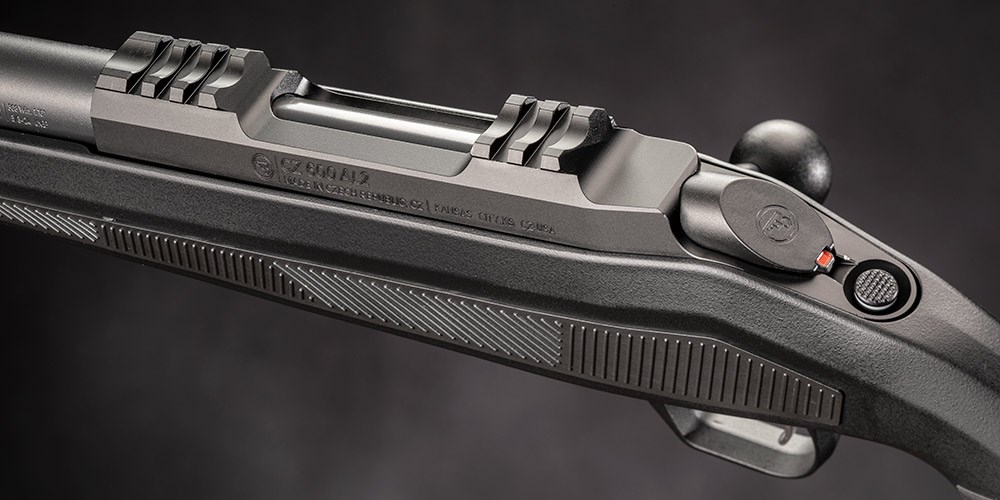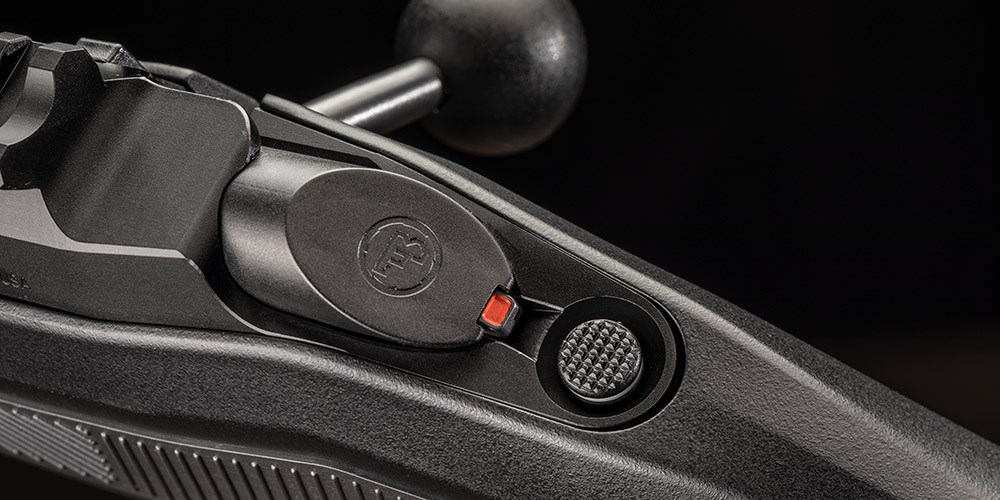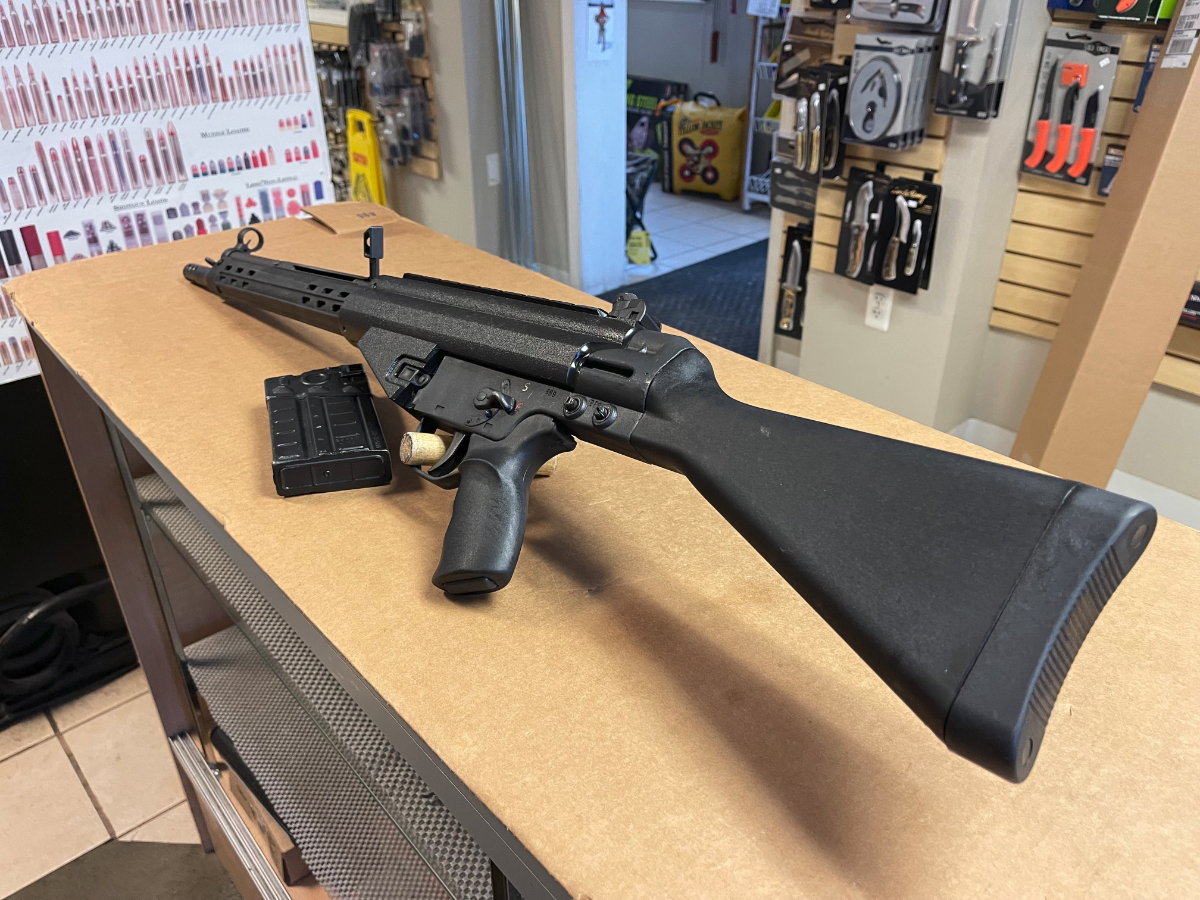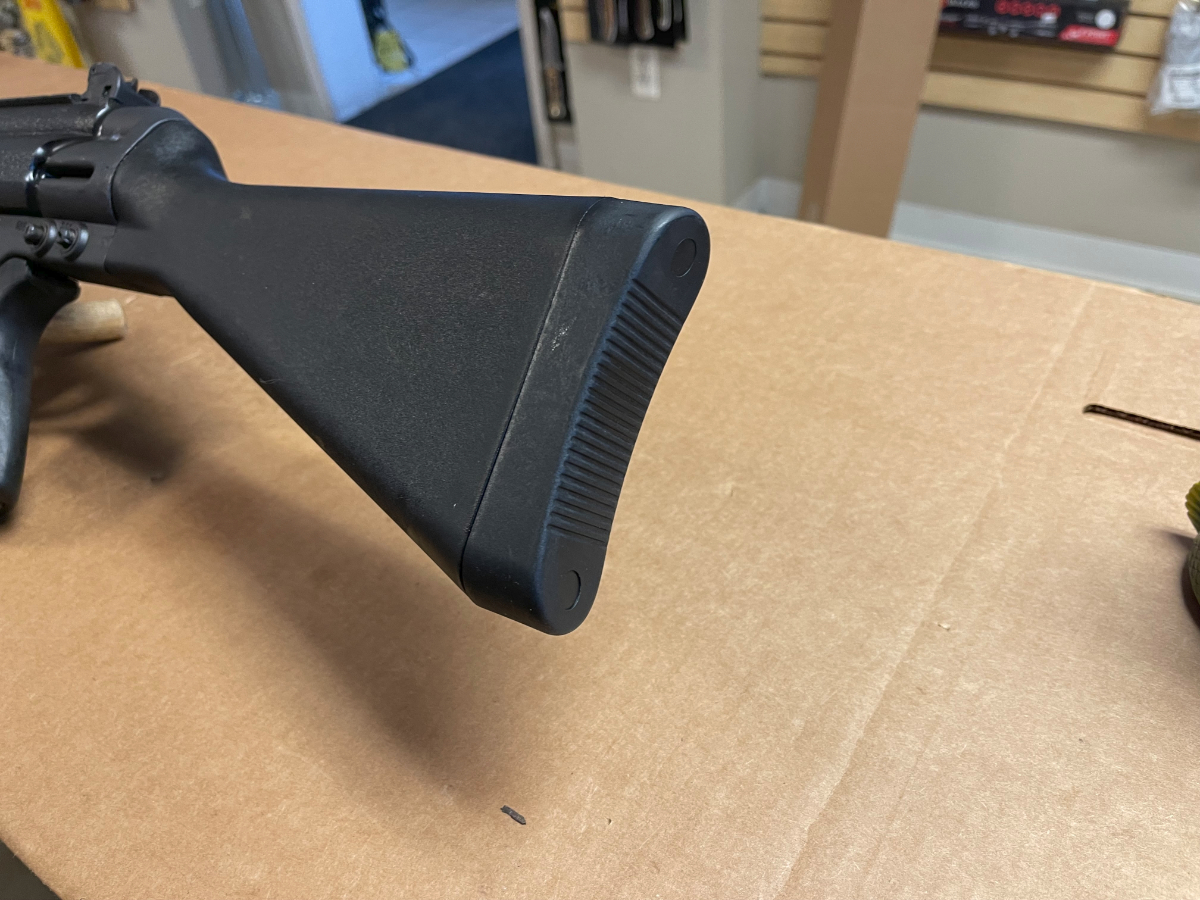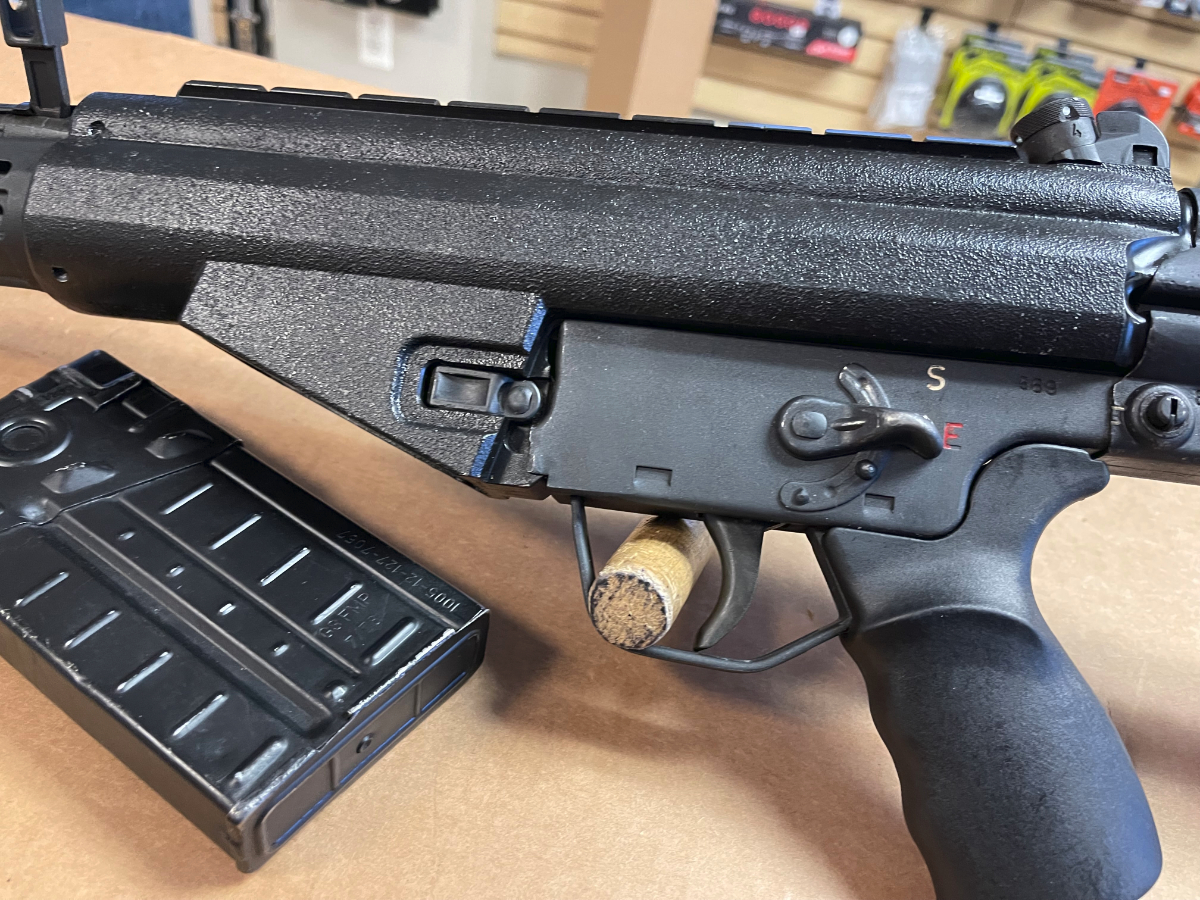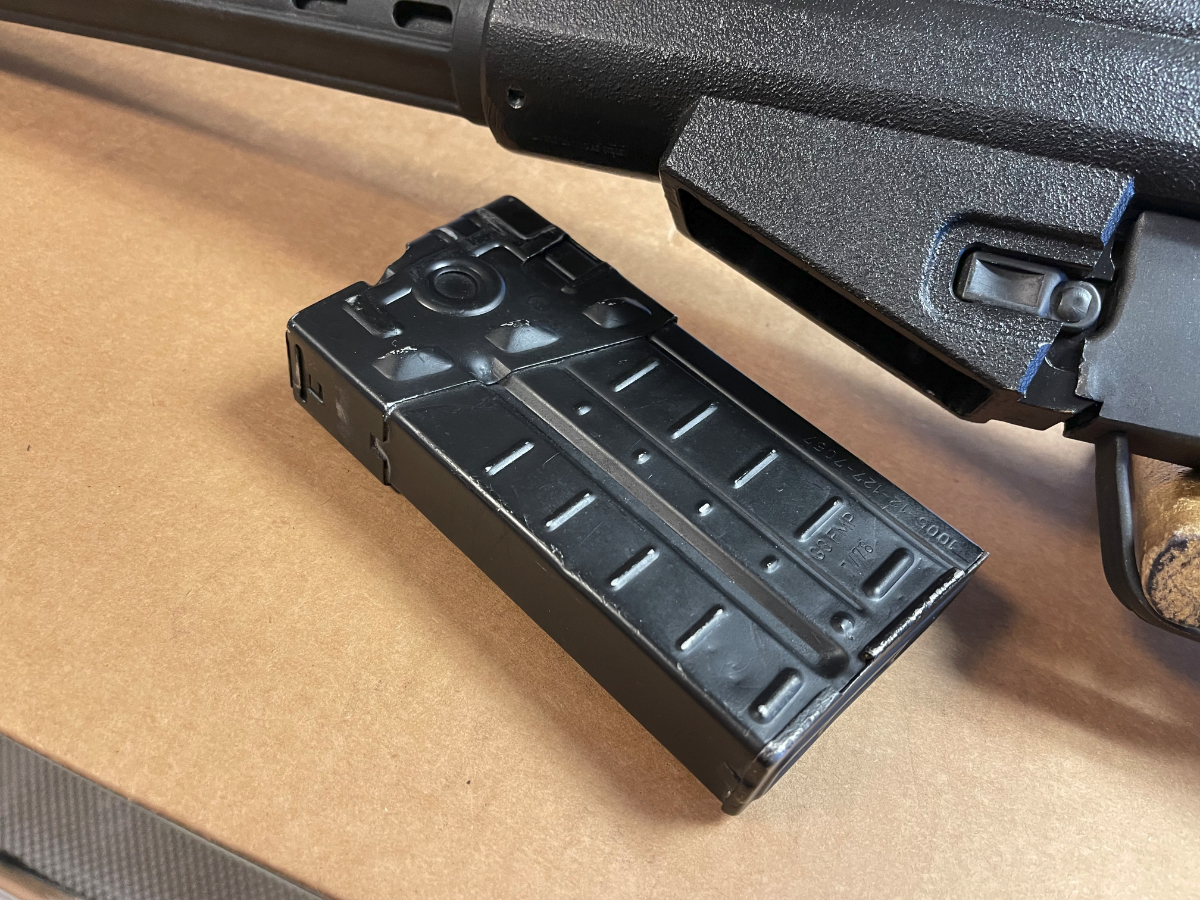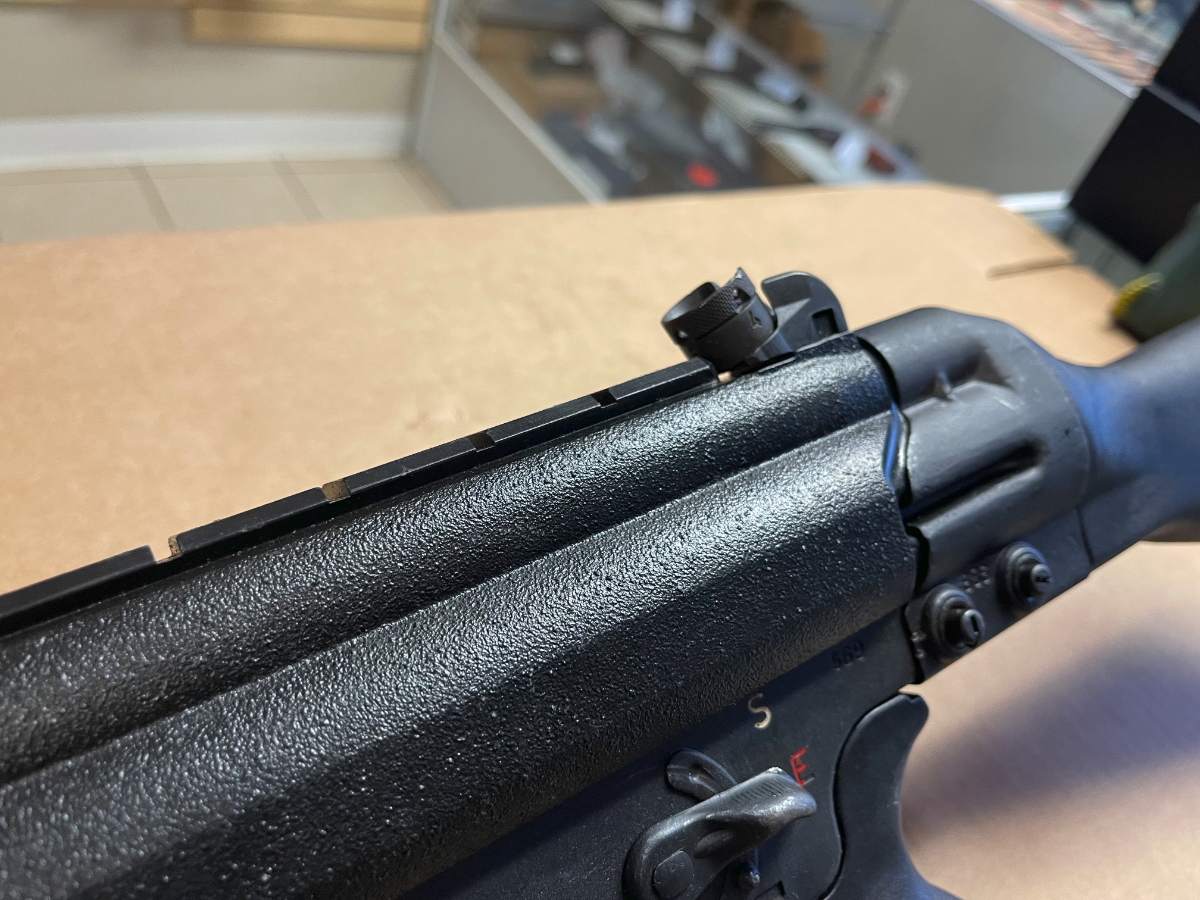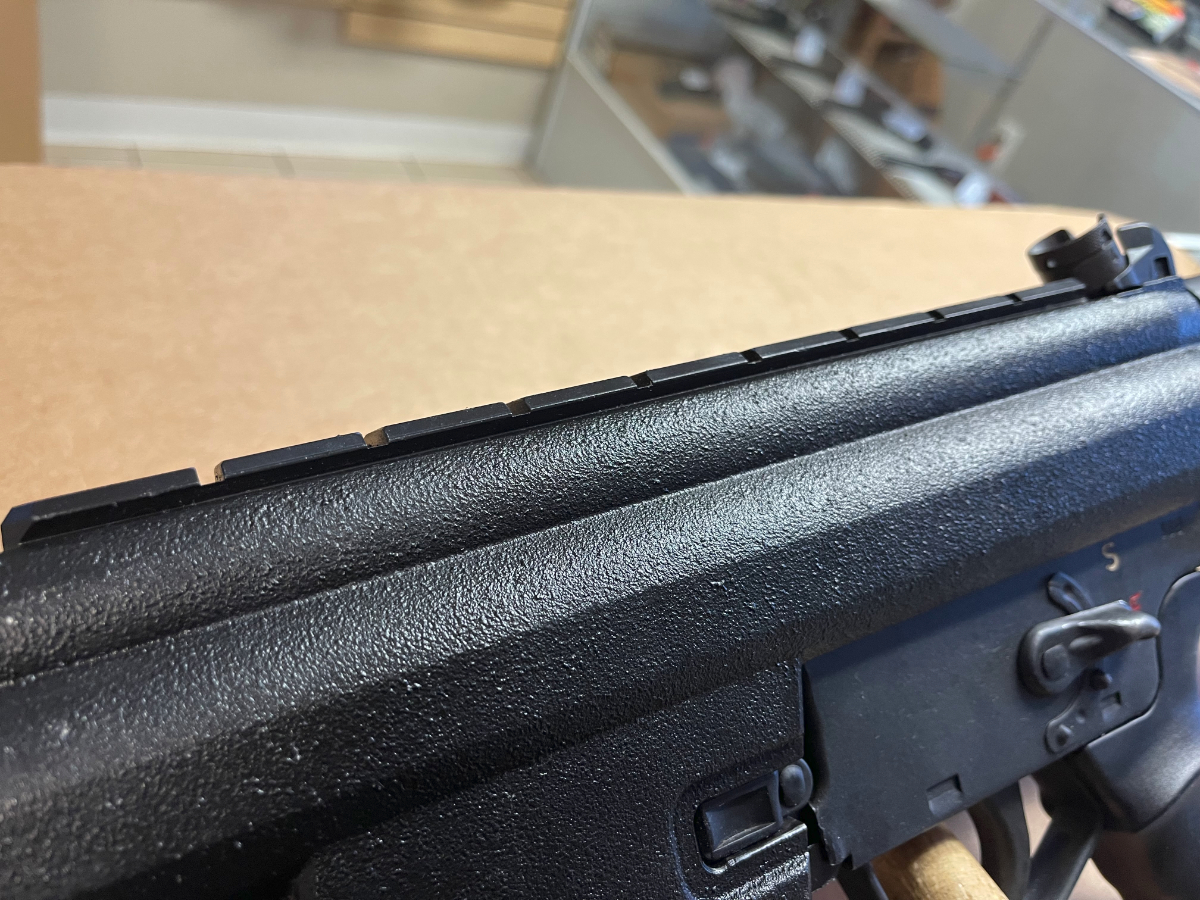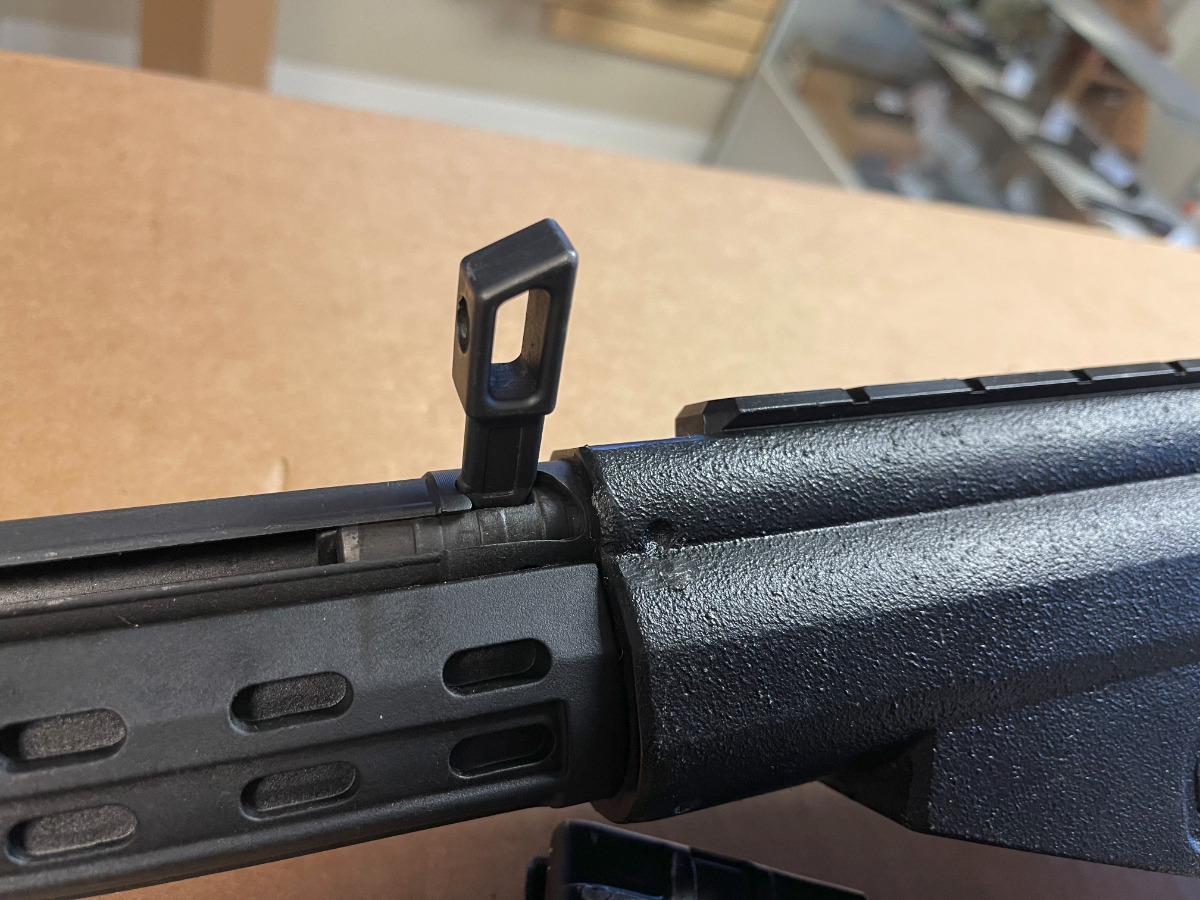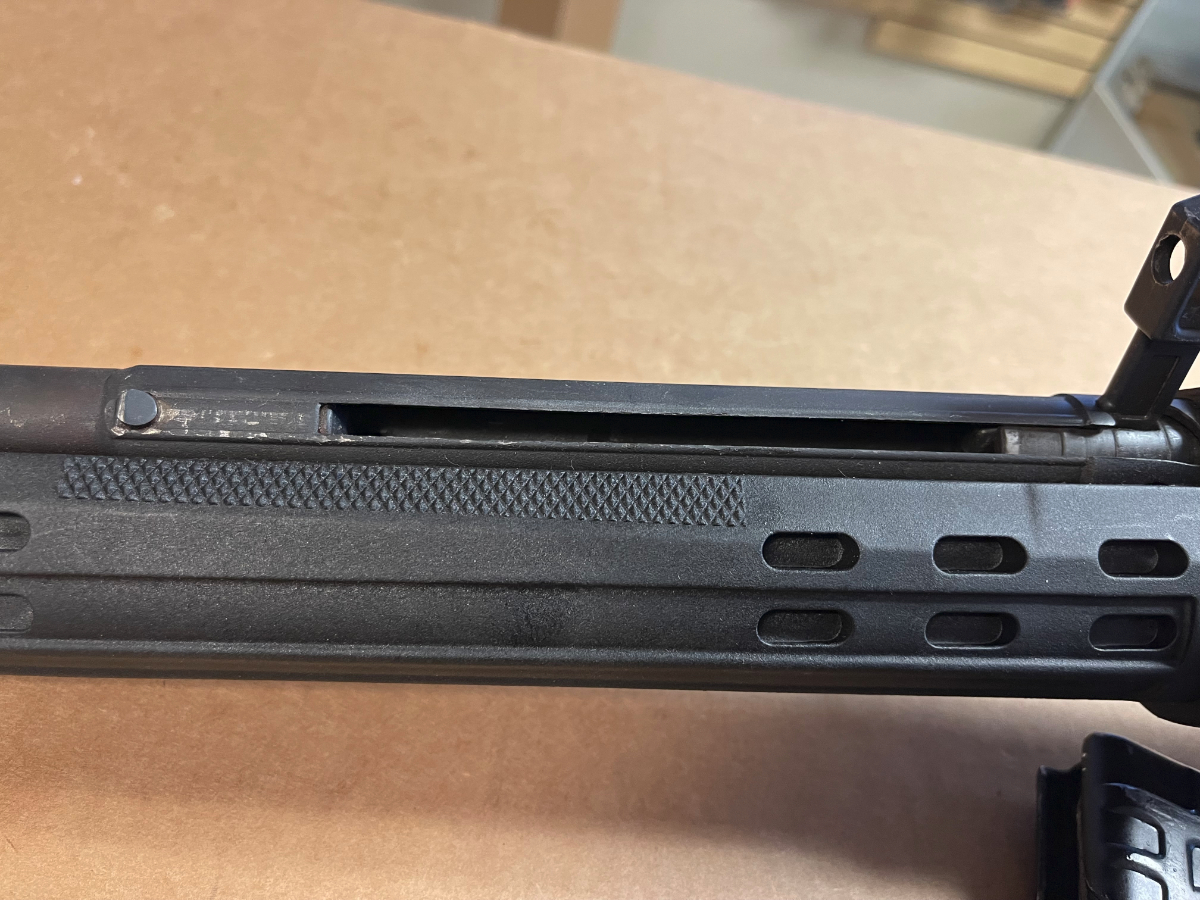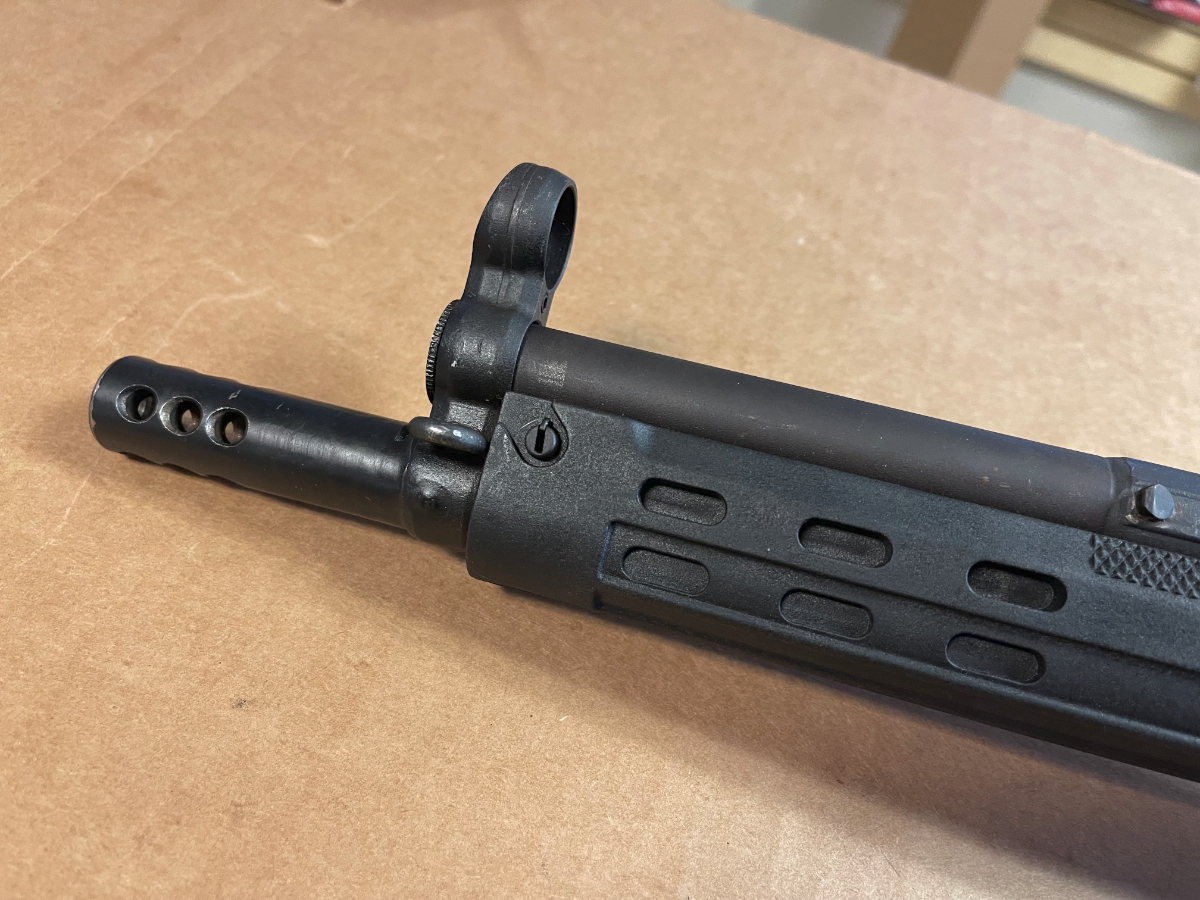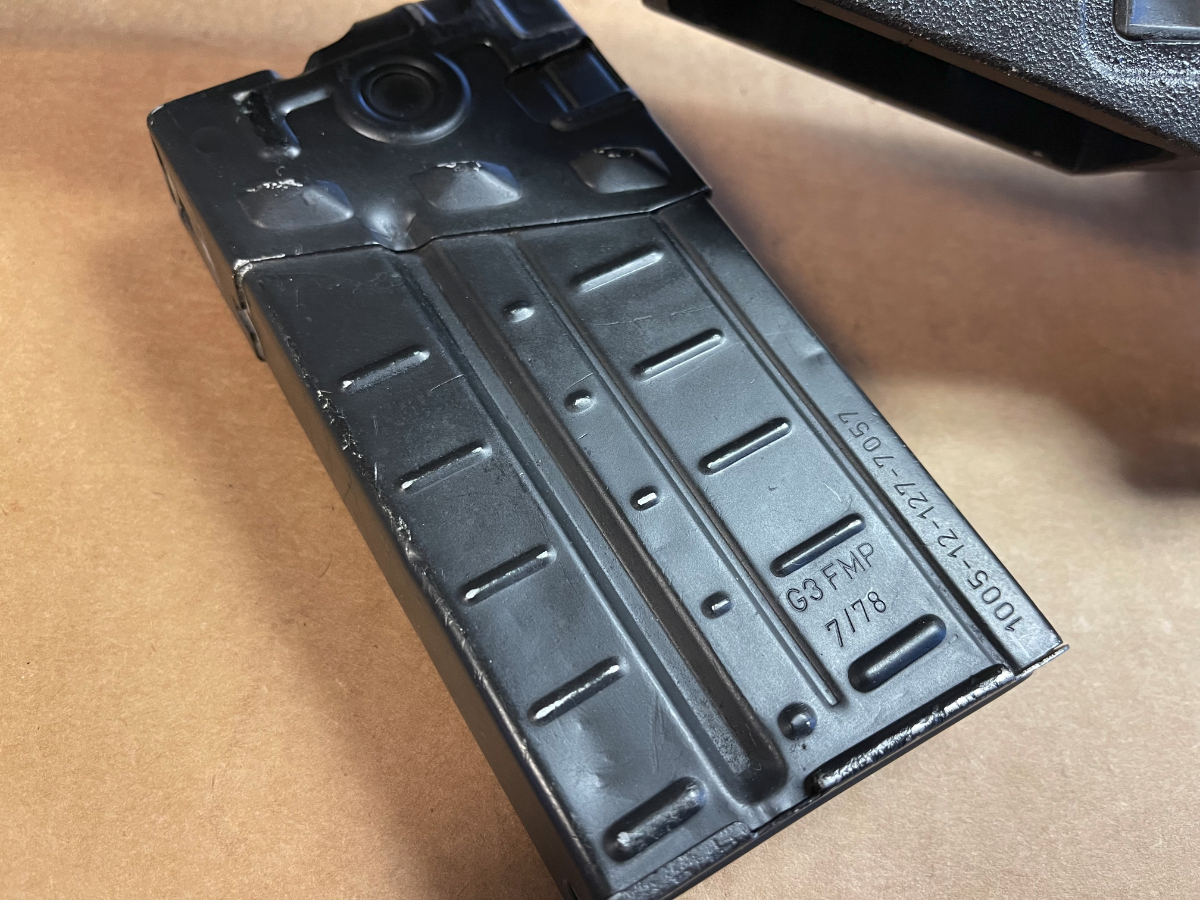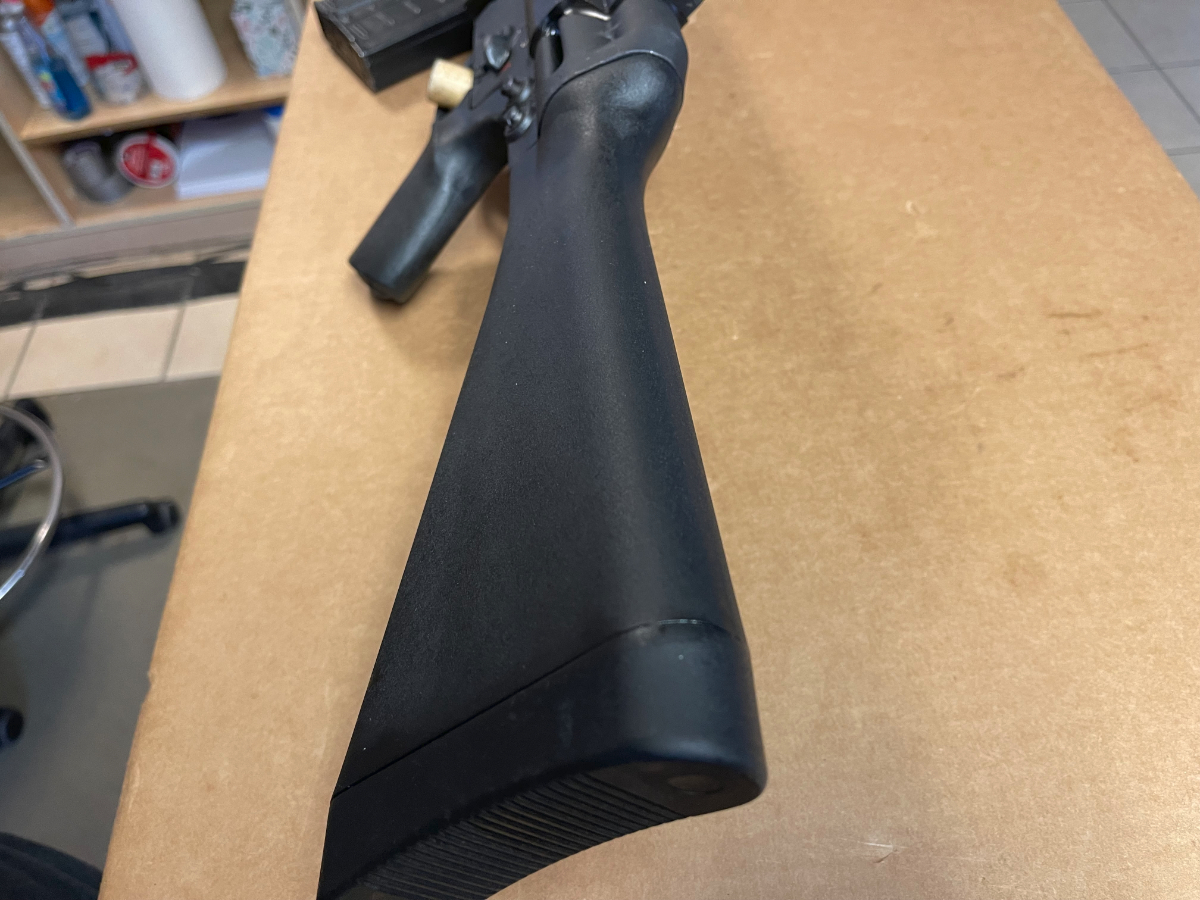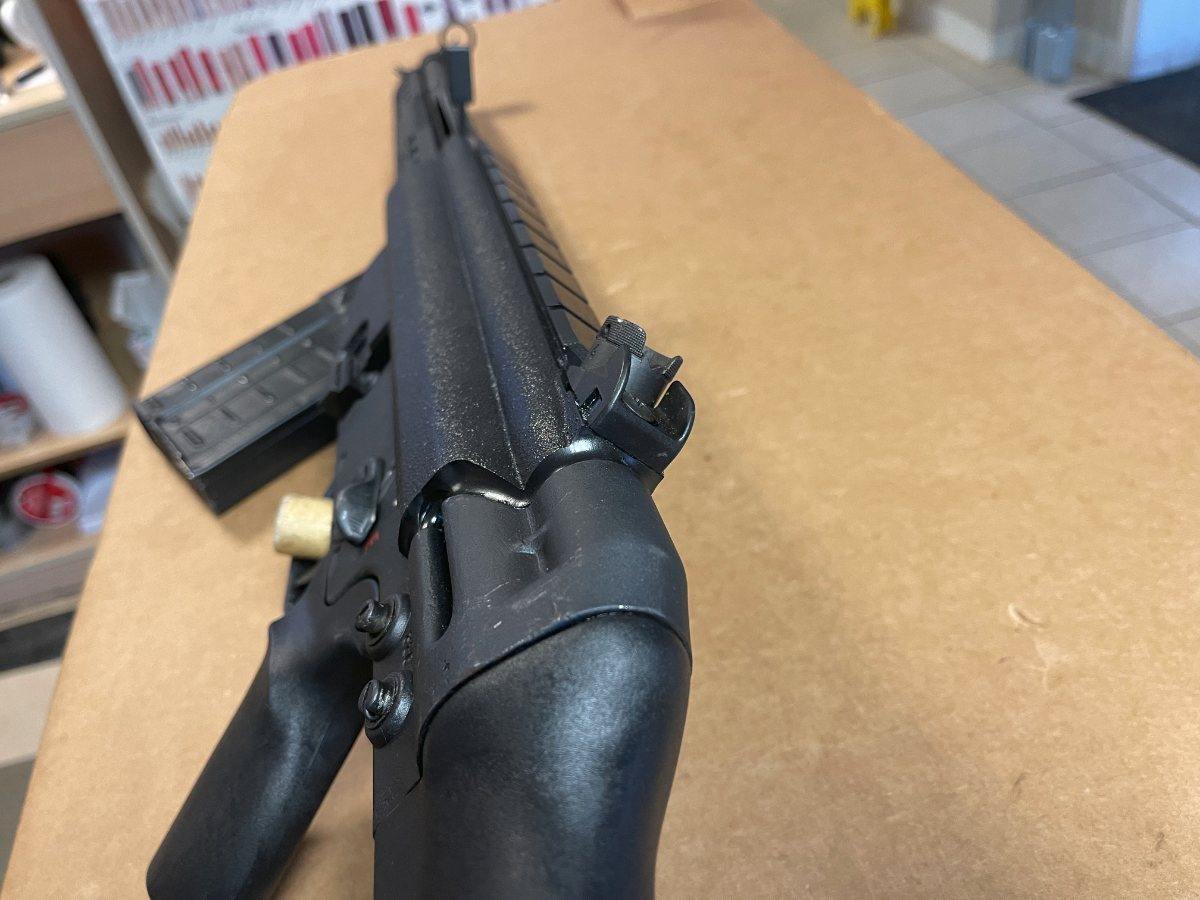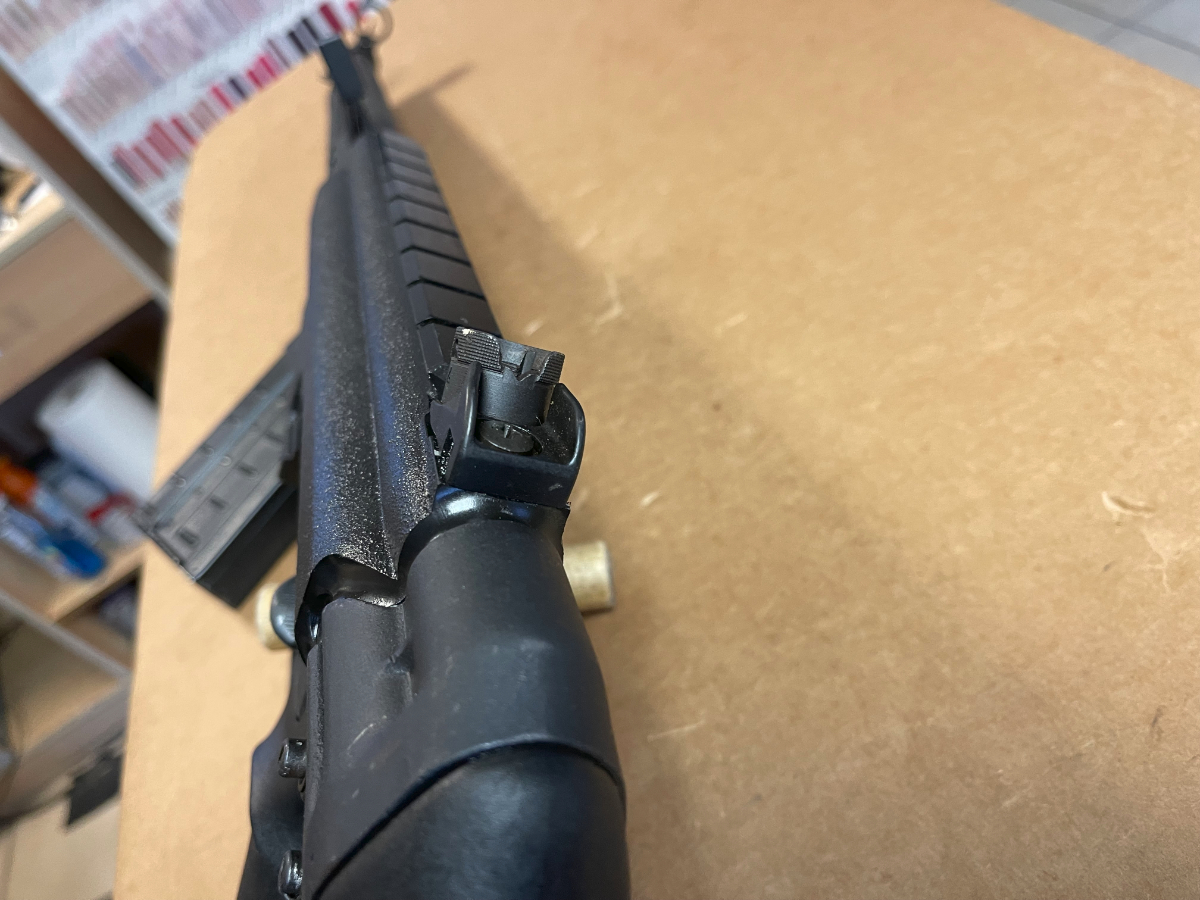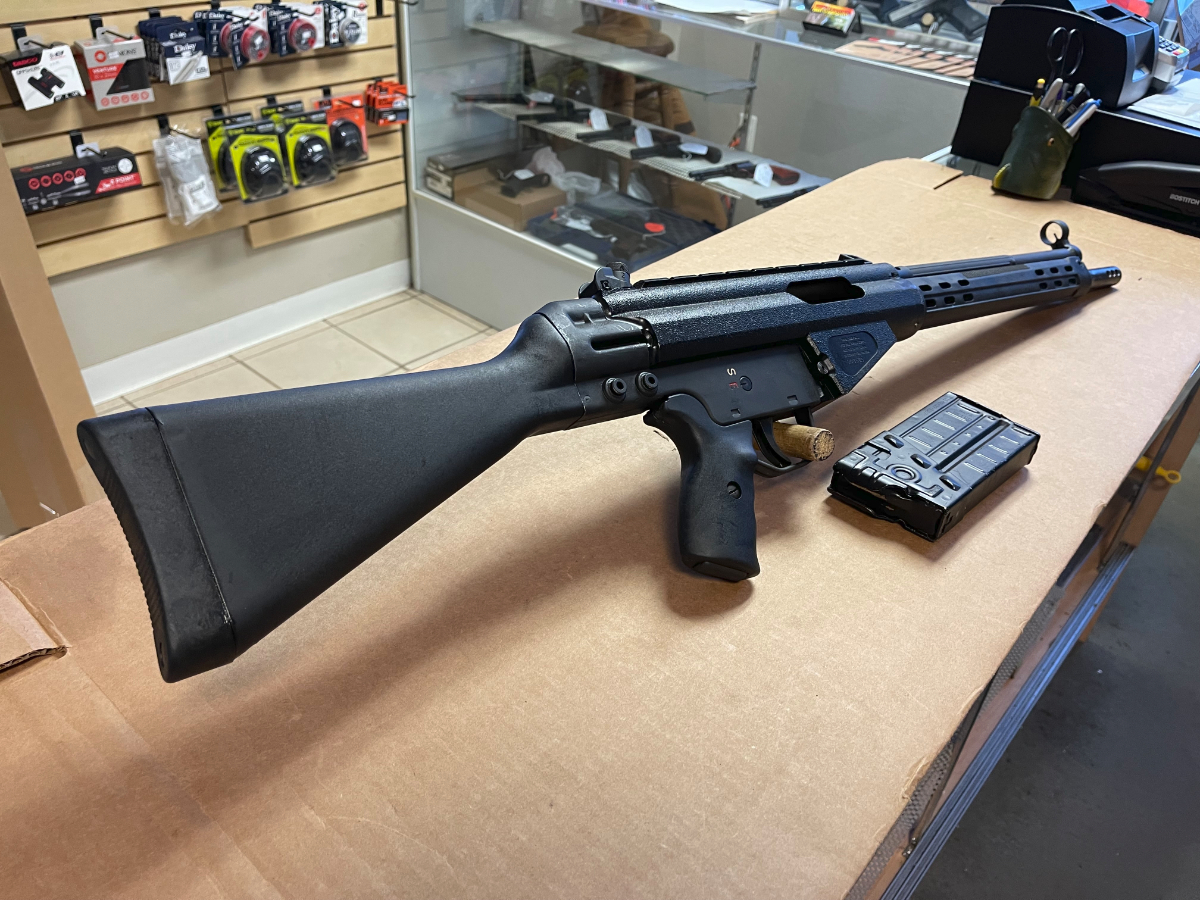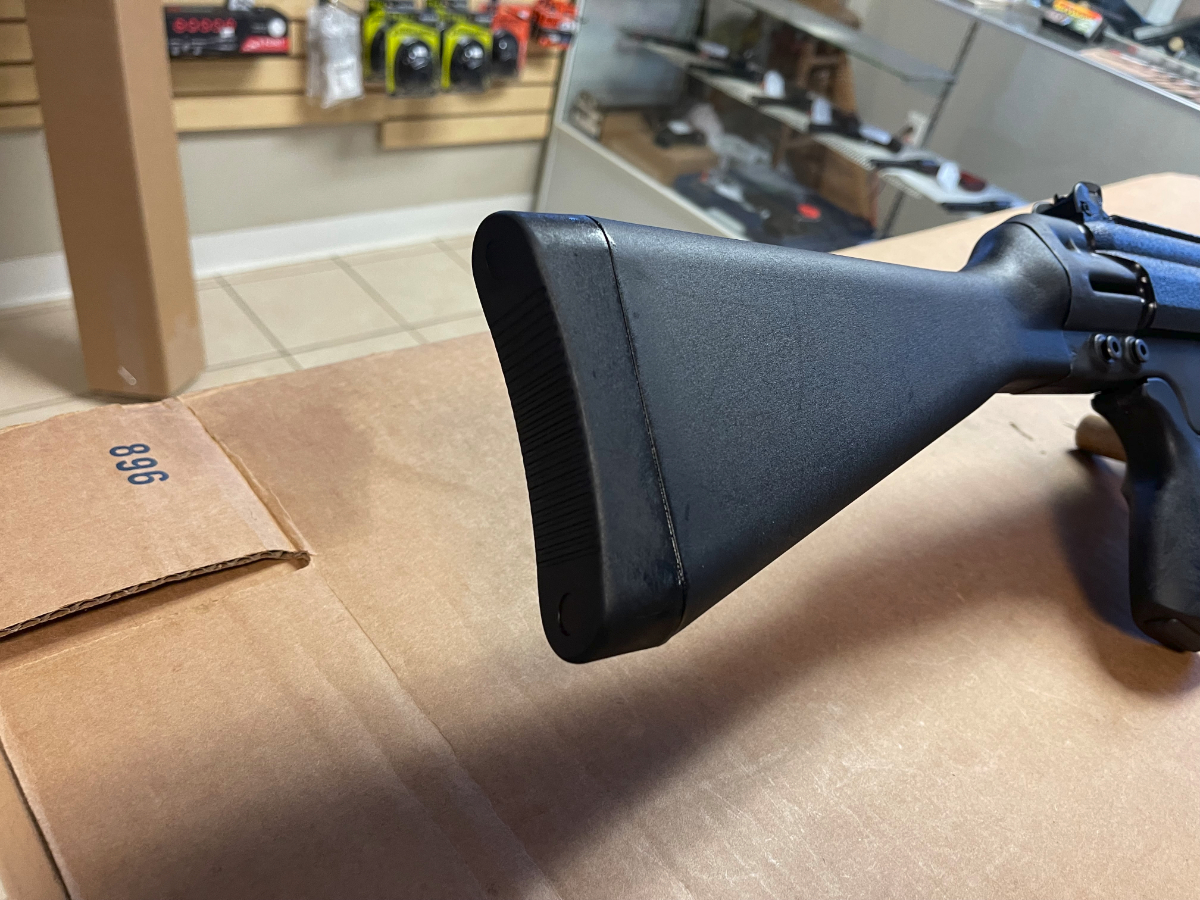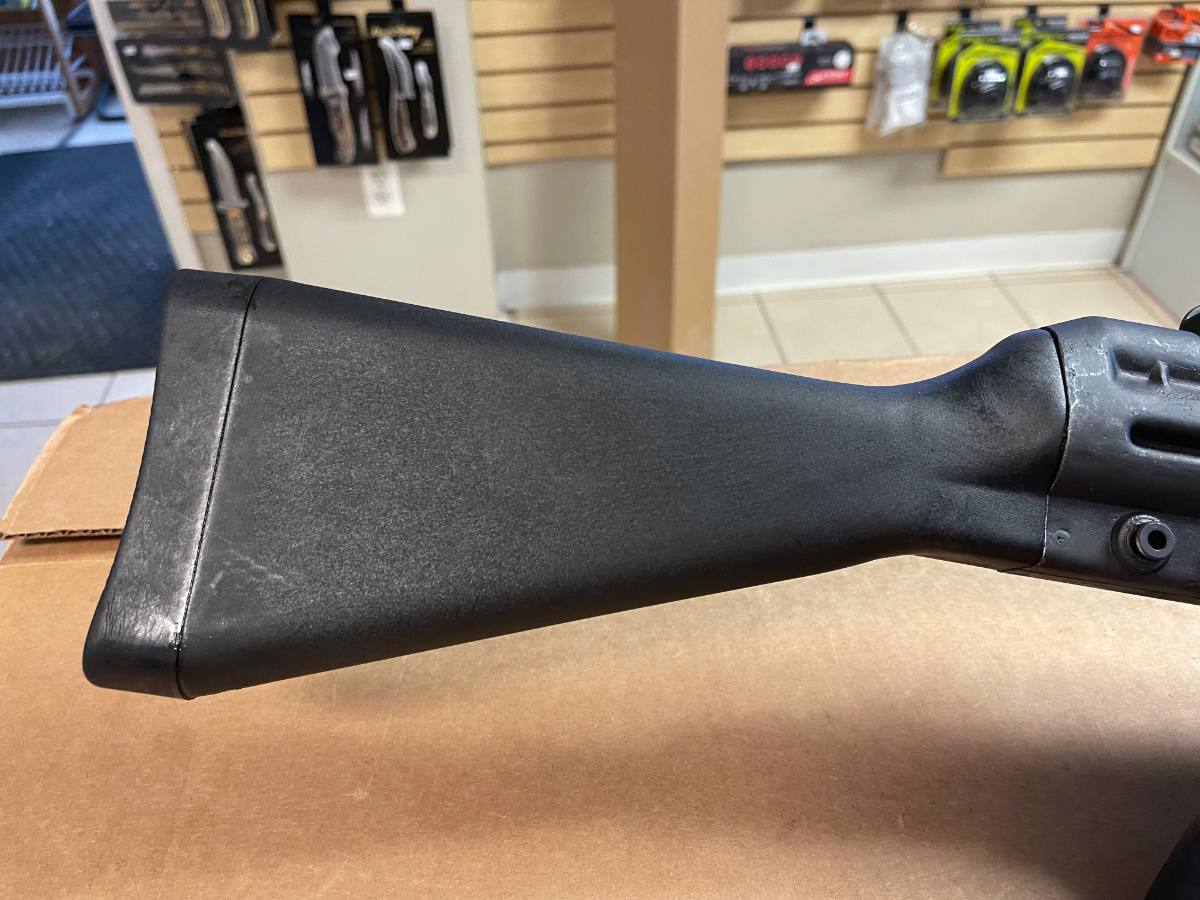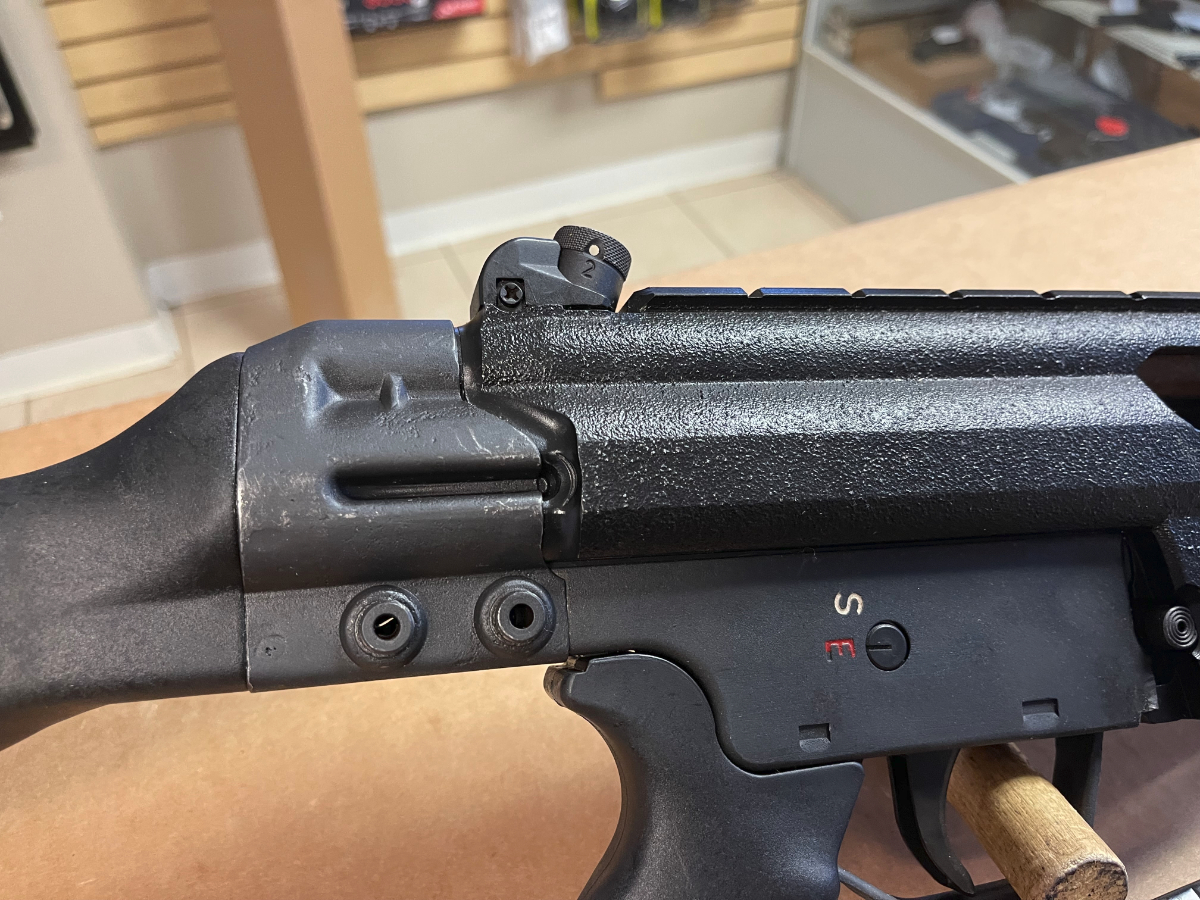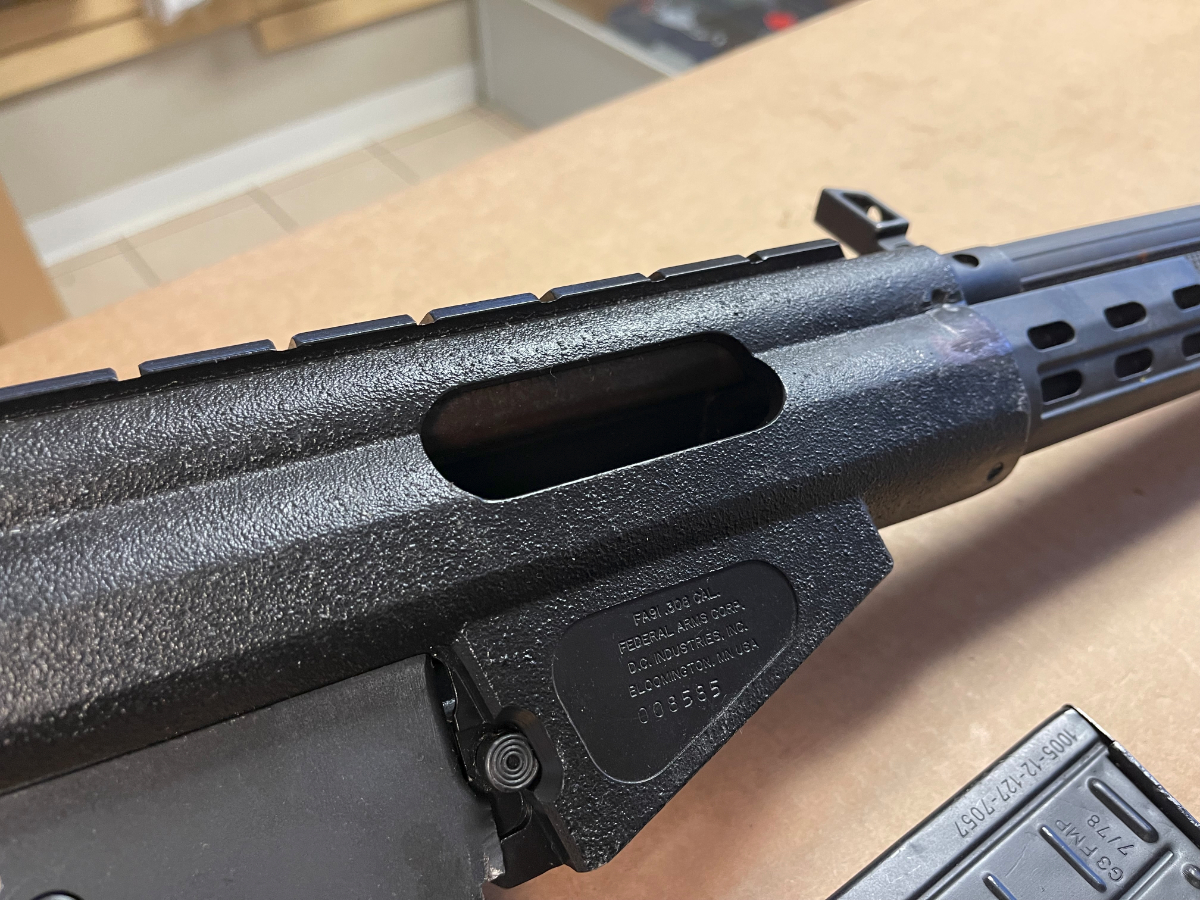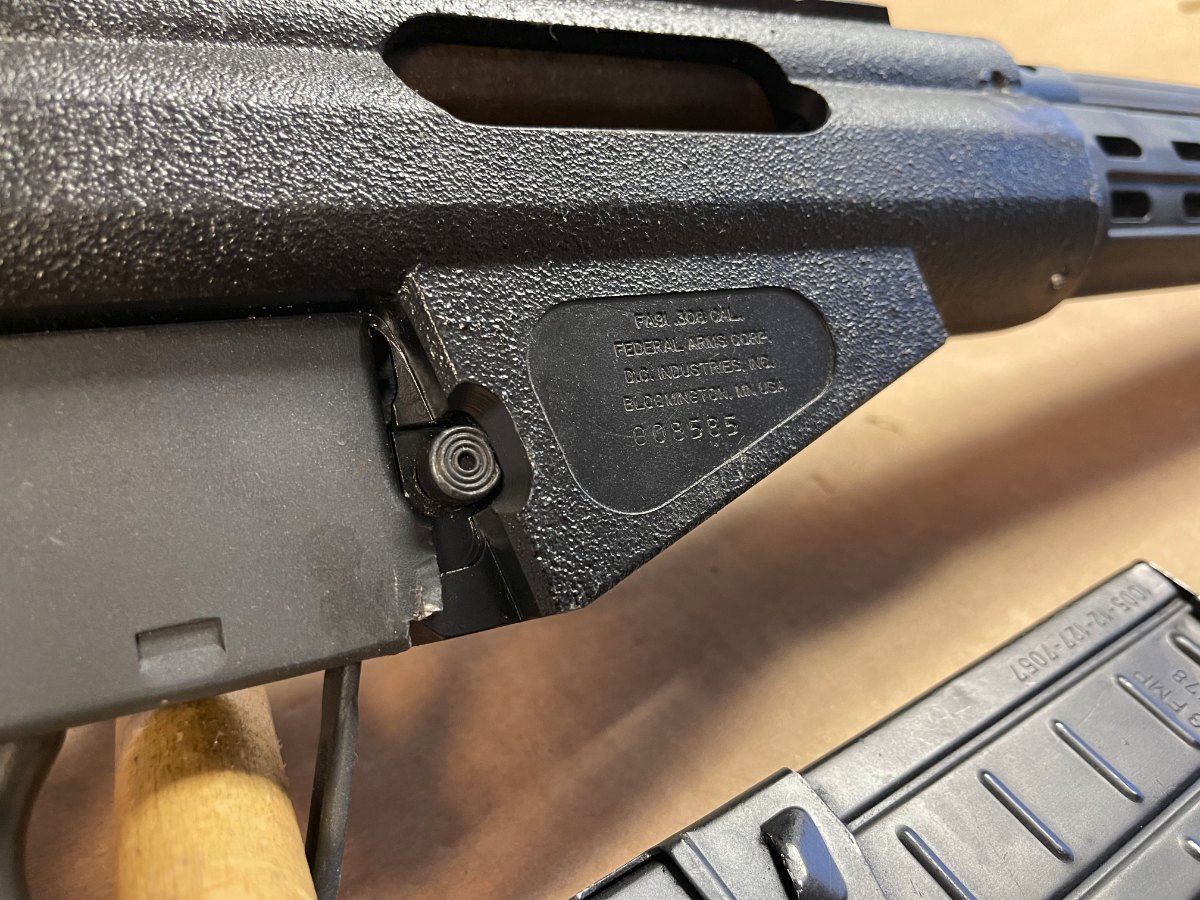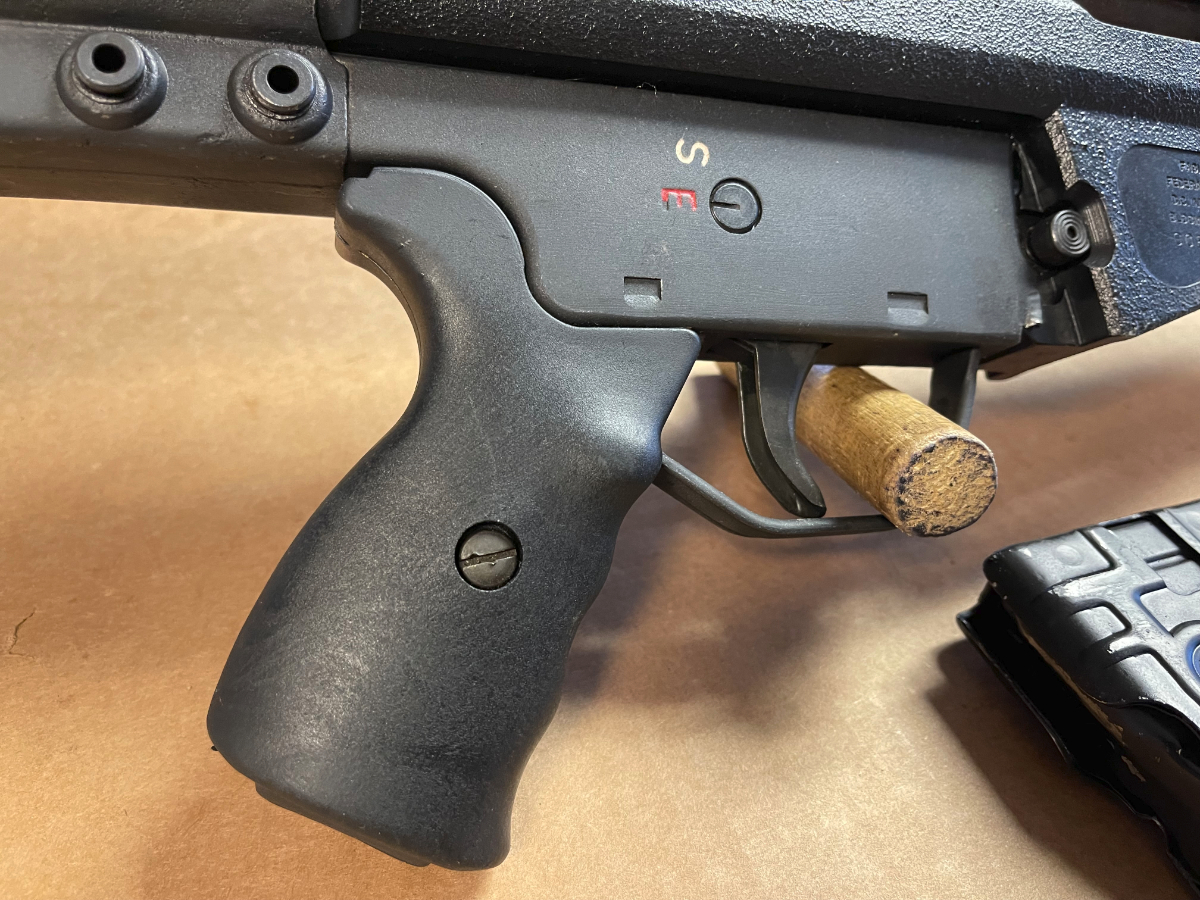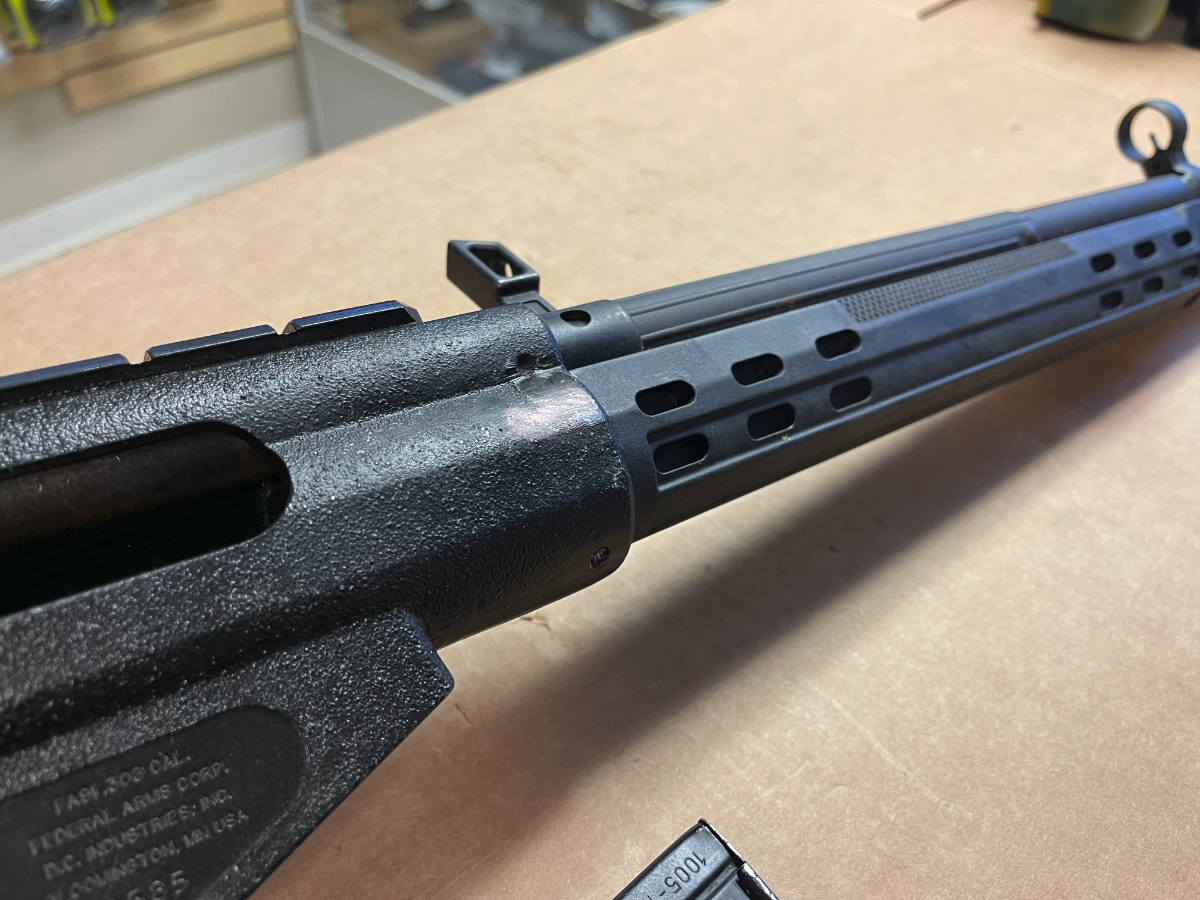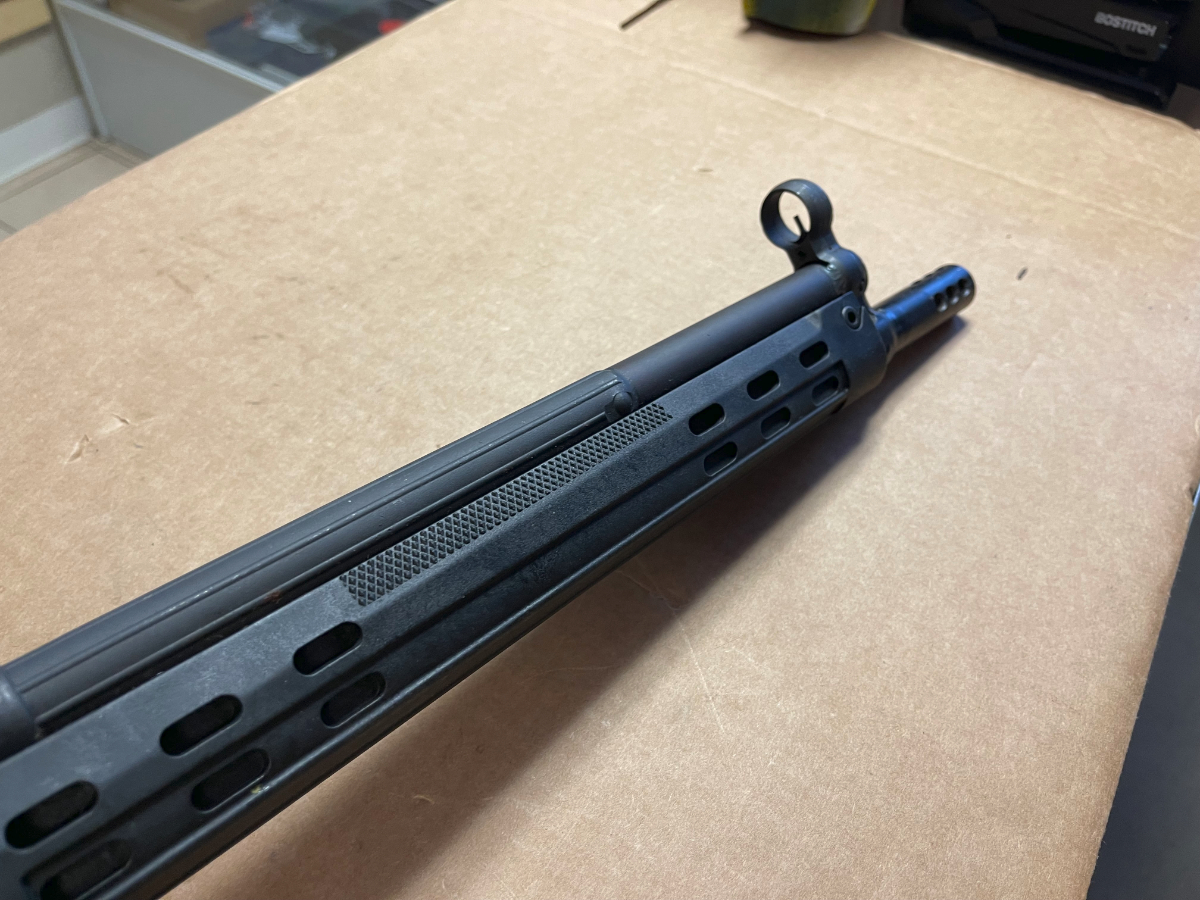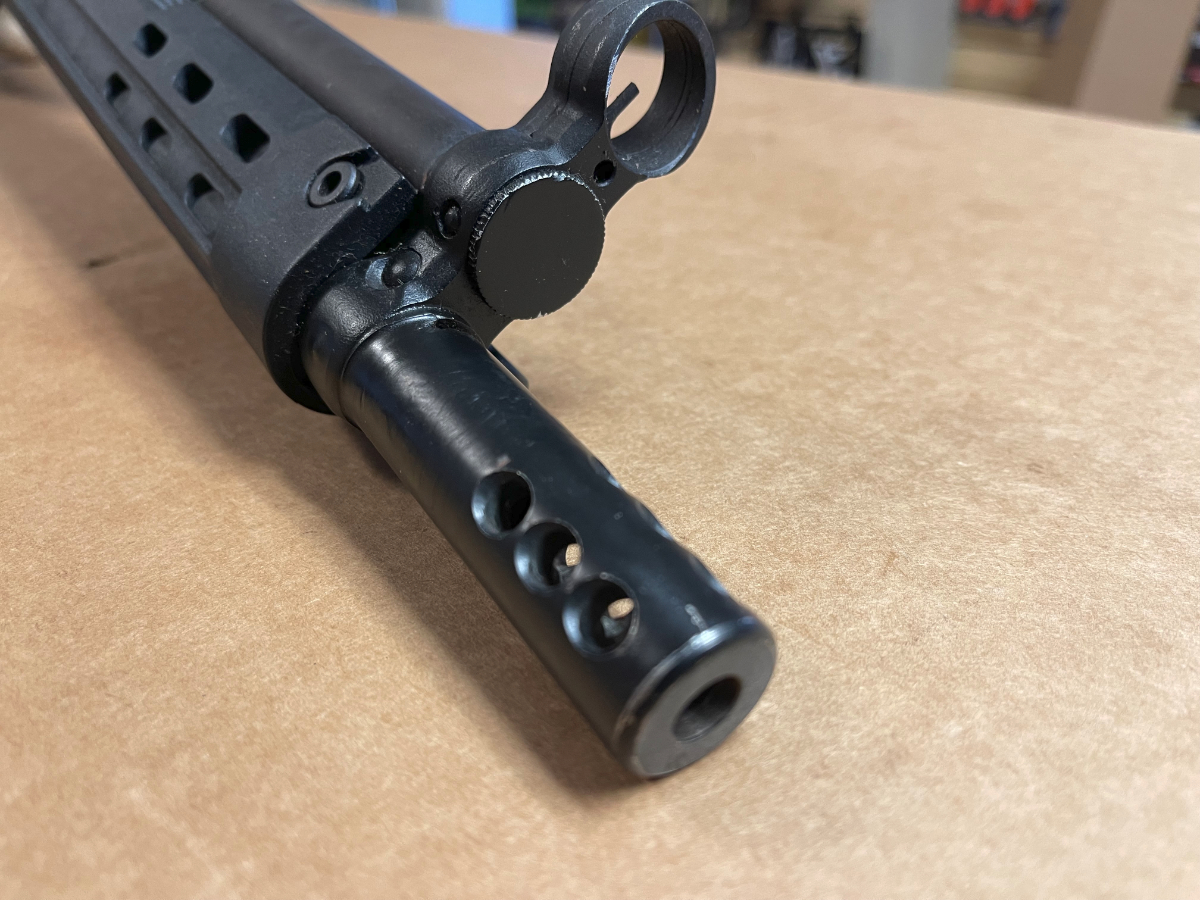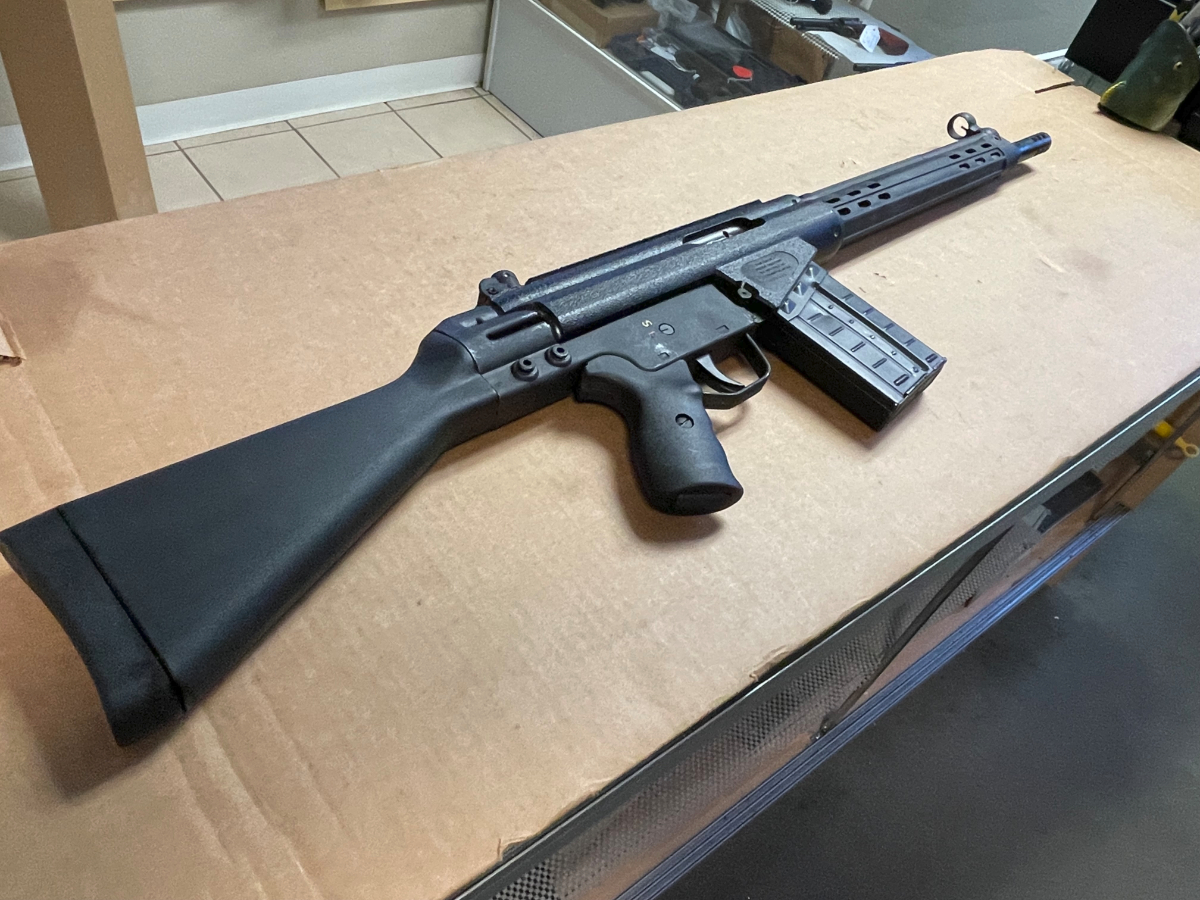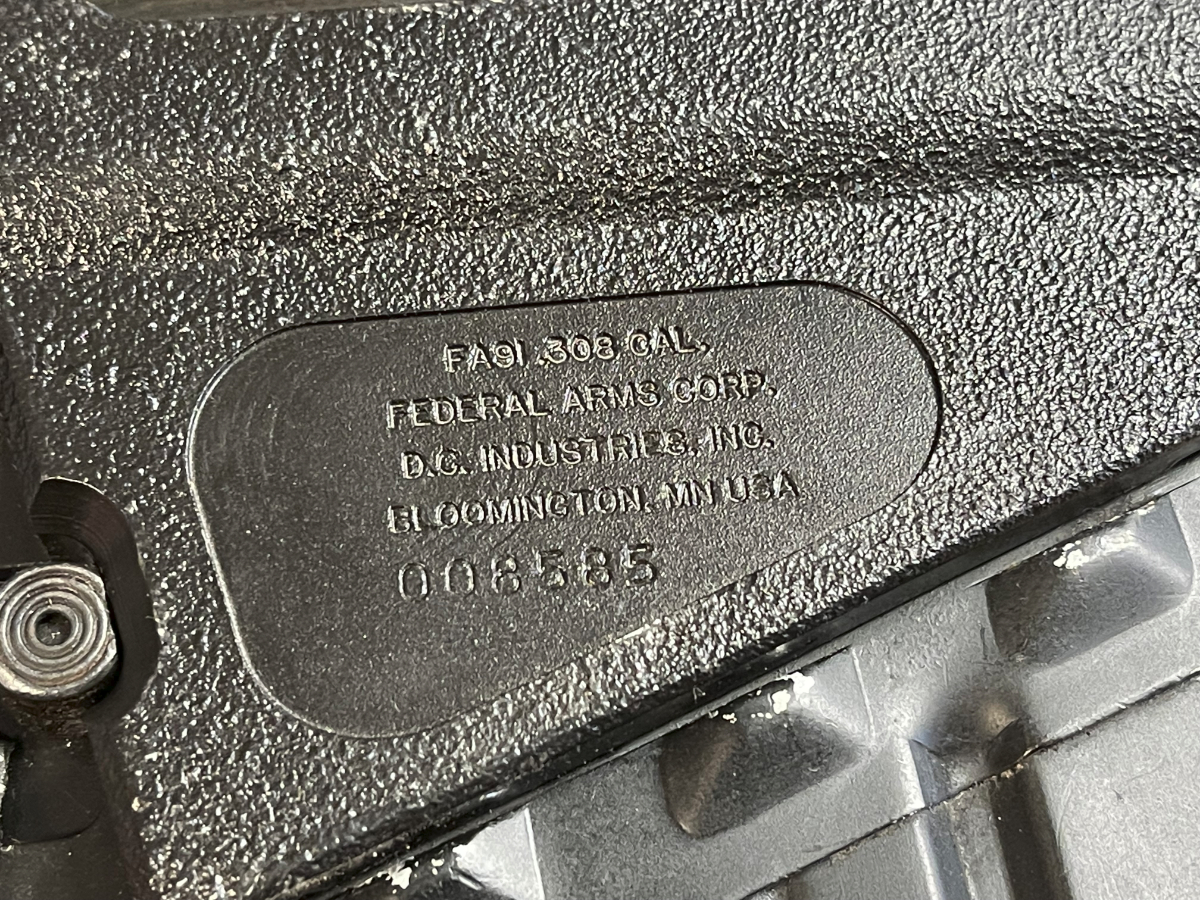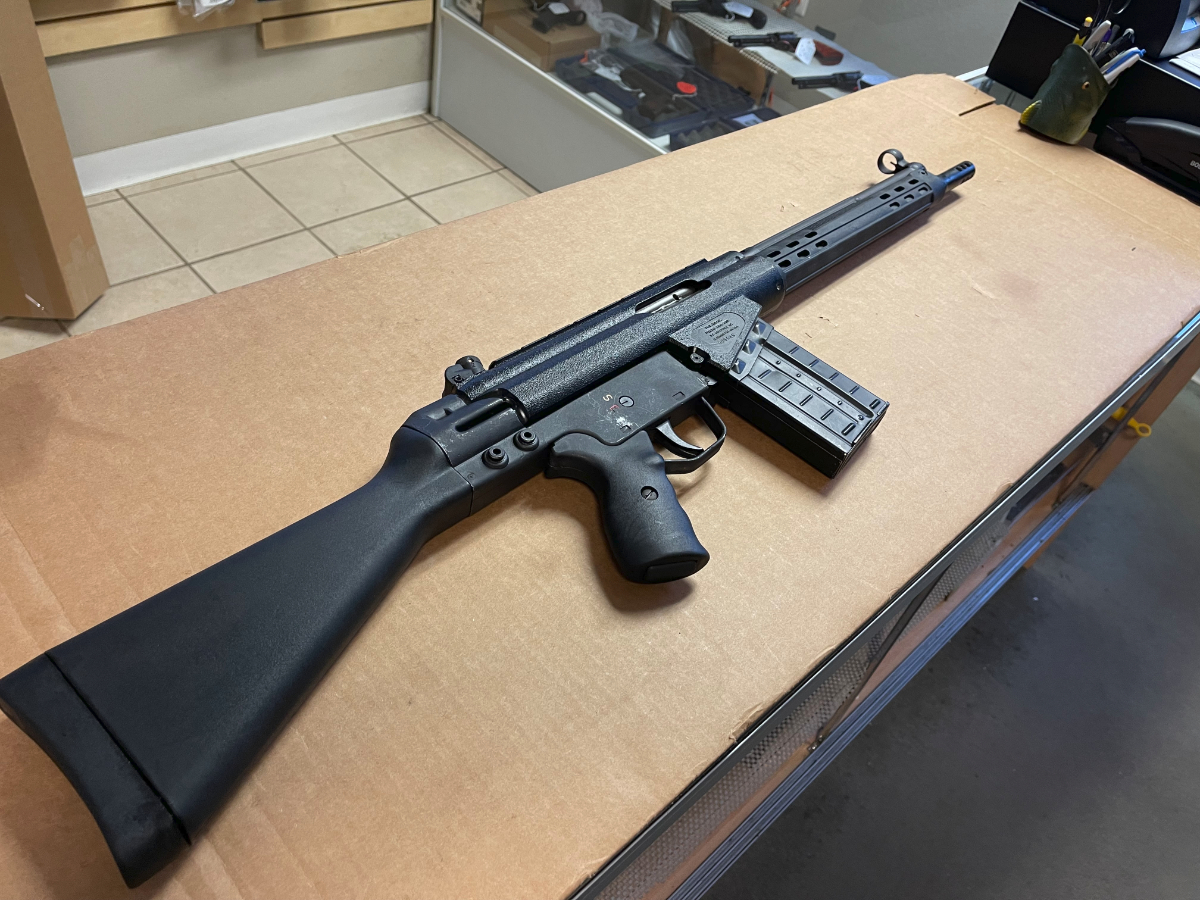
Sometimes I like to do dumb things with firearms. Dumb as in silly, not unsafe. I like to use them in the ways they were never intended to be used. For example, see my story on using a Hi Point Yeet Canon XL to make Grand Master.
Such is the case with my M1 Garand. The barreled action and other parts had been sitting in a box without a stock for well over a decade. At some point I lost the original stock. But one day while bored In the spring of 2021 I decided it was time to bring the Garand back to life.
The Dupage trading company makes very nice replica stocks for your Garand. They make a few versions including some very nice laminate stocks, but I went for the standard black walnut. I also opted to have all the metal parts pre-installed. The stocks are mostly drop-in and mine only required some minor filing to fit my M1. It’s a great value at only $180.

I wanted to make my M1 a little more modern as well. Hopco USA makes an excellent red dot mount that fits the Garand and the M1A. But before the Fudds start clutching their pearls and fainting over someone bubbafying a rare Garand let me explain. My Garand is nothing special; it’s a run-of-the-mill Springfield made in March of 1943. As far as I can tell it is just like millions of others and has no unique or historical significance.
Additionally, the Hopco RDS mount requires no permanent alterations to your rifle; that’s why I think this product is so cool. In short, you remove the windage screw from your rifle then take out the rear sight and spring. The Hopco mount block fits into the rear sight housing and is secured by re-installing the windage screw and drum. Then two set screws in the block are tightened down to raise the RDS block up. The windage screw locks it all in place. Because of the manufacturing tolerance variance of old battle rifles Hopco includes a few thin shims to take up any dead space under the mount block if needed. The entire process is easily reversed and you can return your M1 to its original condition in a matter of minutes.

Now all you have to do is screw an optic to the Hopco block and zero it. The Hopco mount comes in three flavors that accommodate most red dot sights on the market today. Version 1 fits the Burris Fastfire, Vortex Venom and Viper, Doctor, Insight and Primary Arms Micro. Version 2 fits the Leupold Deltapoint, JP Jpoint, Vortex Razor, Tasco Optima 2000 and C More STS. Version 3 fits the Trijicon RMR and Holosun 407 and 507 variants. It will not work with the 407K or 507K.
I went with version 3 and a Holosun 507C and later changed it to a 407CO. Mine fit without issue but in talking with Hopco they have had some customers experience issues with the width of the 407/507. It can be fixed with a few strokes of a file though.

.30-06 ammunition of the 1930s was different than today’s .30-06 and Garand users must be careful when shooting modern ammo. The CMP recommends ammo with no more than 50,000 CUP pressure and bullets less than 172gr. Good reloading manuals have a separate section for .30-06 and M1 Garand .30-06 loads. First, you are putting a 70-year-old chamber trying to contain very high pressure right next to your face. Second, ammo that is too hot can send your op rod back fast enough to bend it and they are not cheap to replace. For more info about this there are hundreds of articles with more technical info all over the internet.
To combat the op rod problem I replaced the standard gas plug with an adjustable unit from Schuster. It allows you to tune the amount of gas sent to the op rod, much like an adjustable gas block on an AR-15. The speed of the rod also can affect barrel harmonics which affects the accuracy of your rifle. So you can use small changes to the amount of gas to help tighten your groups. Learn more about the gas plugin this article from Jordan Michaels. Schuster Adjustable Gas Plug Review
I had a box of used but prepped .30-06 primed brass and it was time to use it. I found a beat-up set of Lee steel dies on eBay. This would be a low volume caliber for me so I was not worried about high-end carbide dies. The .308 conversion kit for my Dillon 550C reloading press could also be used for .30-06 so I was good to go on tools. I found some Hornady 150gr FMJ boat tail bullets from one of the big resellers. Checking my various loading manuals I found some good loads for IMR 4895 which I already had.
I started towards the lower end of the spectrum from the manual and tested them in the rifle. I settled on 43.5gr of IMR 4895 with the Horandy 150s at 3.190 OAL and crimped the case into the bullet’s cannelure. 10 shots past the chrono gave me an average of 2532 fps. A little tuning on the gas plug and I was soon turning out 3.5 inches 5 shot groups at 100 yards. Tuning the gas plug also allowed me to minimize recoil, so even though I was shooting a big ass .30-06, the recoil was fairly mild.
The rifle was back in service and I had plenty of ammo, so what now? Do something dumb!
Cowtown Range’s Multigun match was about a week away and I was planning to use the Garand. But I was missing something – a bayonet! There are a variety of bayonets for the Garand over its multi-decade service life, but I went with the first one. A 16 inch monster originally made for the 1903 Springfield. These are rather rare and expensive. Instead, I went with a replica made of the finest Chinesium for $35 because I planned to abuse it.

On match day I left the Garand in my bag until the last possible moment before I was to shoot. My friends figured I was going to be shooting my regular AR competition rifle, the U3GR, but they were in for a surprise. Out came 11 pounds of antique steel and walnut, made on manual mills and tools by old school craftsmen 73 years ago. With Bayonet attached its 59 inches long, just an inch under 5 feet. I remember playing with GI Joes as a kid and thinking no way are some of these rifles almost as tall as the soldier in real life. Well, with a Garand they are!

As I walked to the start of the stage, I got a lot of laughs and a lot of confused stares from my squad and all wondered why I basically had a machete hanging off my rifle. Well, the Garand is fed by 8 round en bloc clips from an internal magazine. To neutralize a paper target you need one hit in the A zone or two hits anywhere on the target. My first stage had 14 paper targets; that is 4 reloads if you shoot each paper twice with a Garand. But I had a plan. The stage started with 13 falling steel targets that I shot with a PCC. I dumped the PCC, grabbed the massive Garand and went to work. I put 3 rounds into the first paper target (it was just out of reach) but the next three were close, I stabbed them! The rest of the paper I shot, it was still a disaster time-wise but damn that was fun.
My third stage of the match started with 16 falling steel with the PCC and 8 paper with the rifle. I was able to neutralize each paper with a single center hit, but I had so much fun stabbing on the earlier stage I did it again after shooting the last target.
“Stage 3, complete with stabbing!“
I took the bayonet off for the long-range stage because it shifted my point of impact about 8 inches at 100 yards. The stage featured steel targets at 100, 200, 450 and 540 yards. I had to hit each one once, anywhere on the target. Since I had a replica stock I had no qualms about drilling it for a sling stud so I could attach a Harris bipod for stability. I went 3 for 3 on the first targets but needed 3 shots to hit the 540-yard IPSC. With just a red dot a 500+ yard target is hard, so I was still very happy to get a third shot hit.
“Stage 4 of the Cowtown match with long-range targets. I finished this stage 15th Overall.”
I finished the match 30th out of 62 (quite a bit below where I normally finish) but it was still lots of fun. Happily, I was 15th overall on the long-range stage. I was also amazed at how well the 73-year-old battle rifle did on the long-range stage which led to my next bad decision.


The Rio Salado club hosted its Black Rifle match on July 4th. This is a medium-range match with targets from 5 to 400 yards designed for AR15’s, aka the Black Rifle. I brought a Brown Rifle. It seemed like a great idea to shoot America’s greatest battle rifle in an action match on America’s birthday. How wrong I was.
I quickly realized it was a mistake to bring the Garand to a match with 5 stages and multiple targets out to 400 yards on every stage. I had not struggled this much with a rifle since maybe my first 3 Gun match 25 years ago. Almost every stage had some type of challenging position to shoot from, kneeling at a barricade, out of a helicopter window, on top of a giant spool, or on top of a 55-gallon plastic drum on its side. There was only one position that we shot prone in the entire match.

It felt like I was constantly hearing the Garand Ping and having to reload. There were 47 hits required (if you only shot one round on the paper) but I went through almost 200 rounds of .30-06; it was an expensive day. Even worse, none of the targets were close enough to stab!
“When you bring a Brown Rifle to the Black Rifle match you are going to reload a lot!”
Even though I struggled and took a ton of makeup shots I still had a great time. I like to win and shoot well, but that isn’t always the end game. Don’t discount how much fun you can have at a match with an uncompetitive gun that you really enjoy shooting.
I won’t bring the Brown Rifle back to a Black Rifle match but I will definitely bring it back to a Multi-Gun match in the future. No, I did not get Garand Thumb at either match.
Get an RDS mount for your M1A or M1 Garand from Hopco USA
Get your new M1 Garand stocks and other parts from Dupage Trading Company
Get a Schuster adjustable gas plug from Schuster Mfg.
Get M1 Garand mag pouches from Pro 2 Customs














